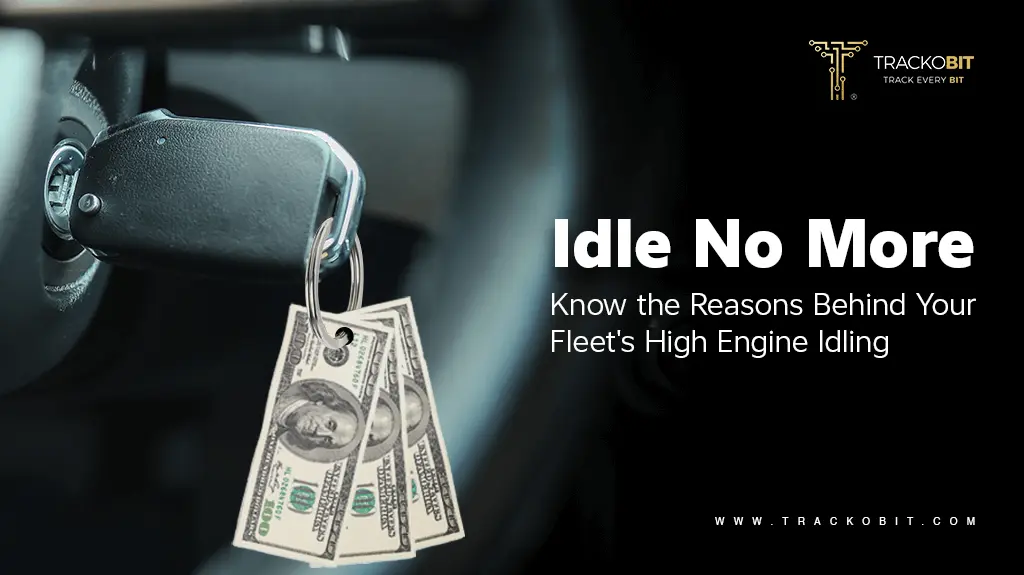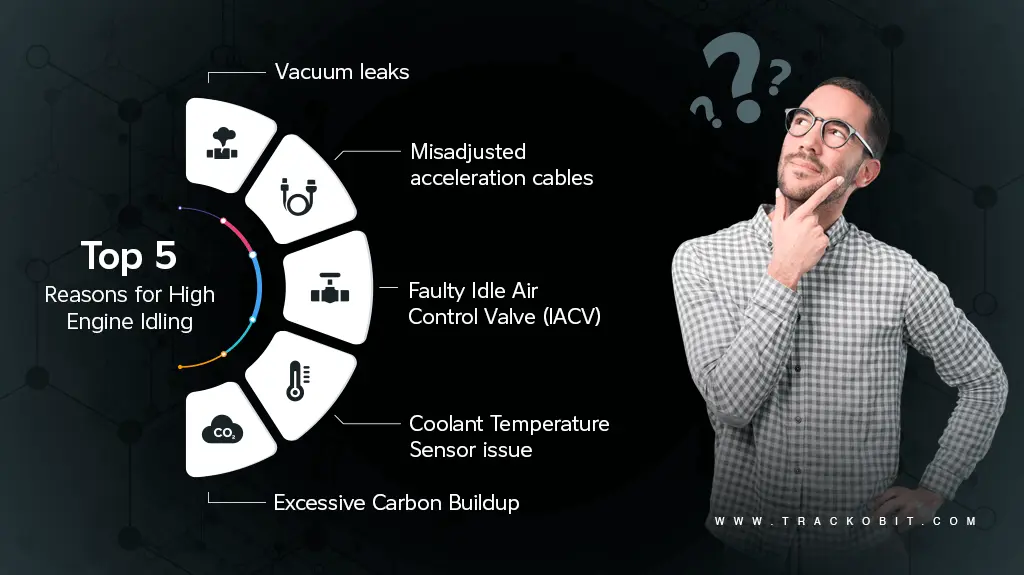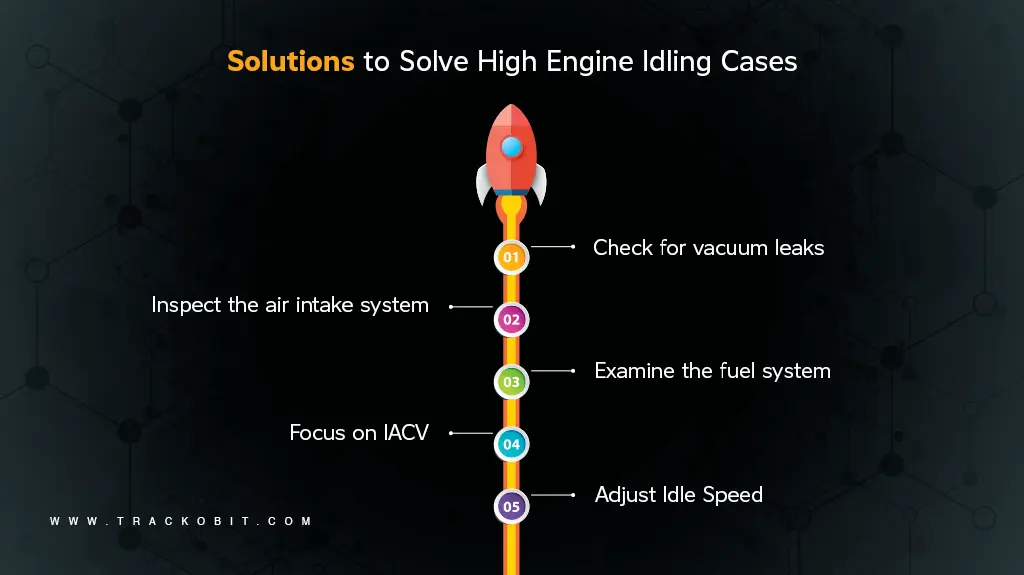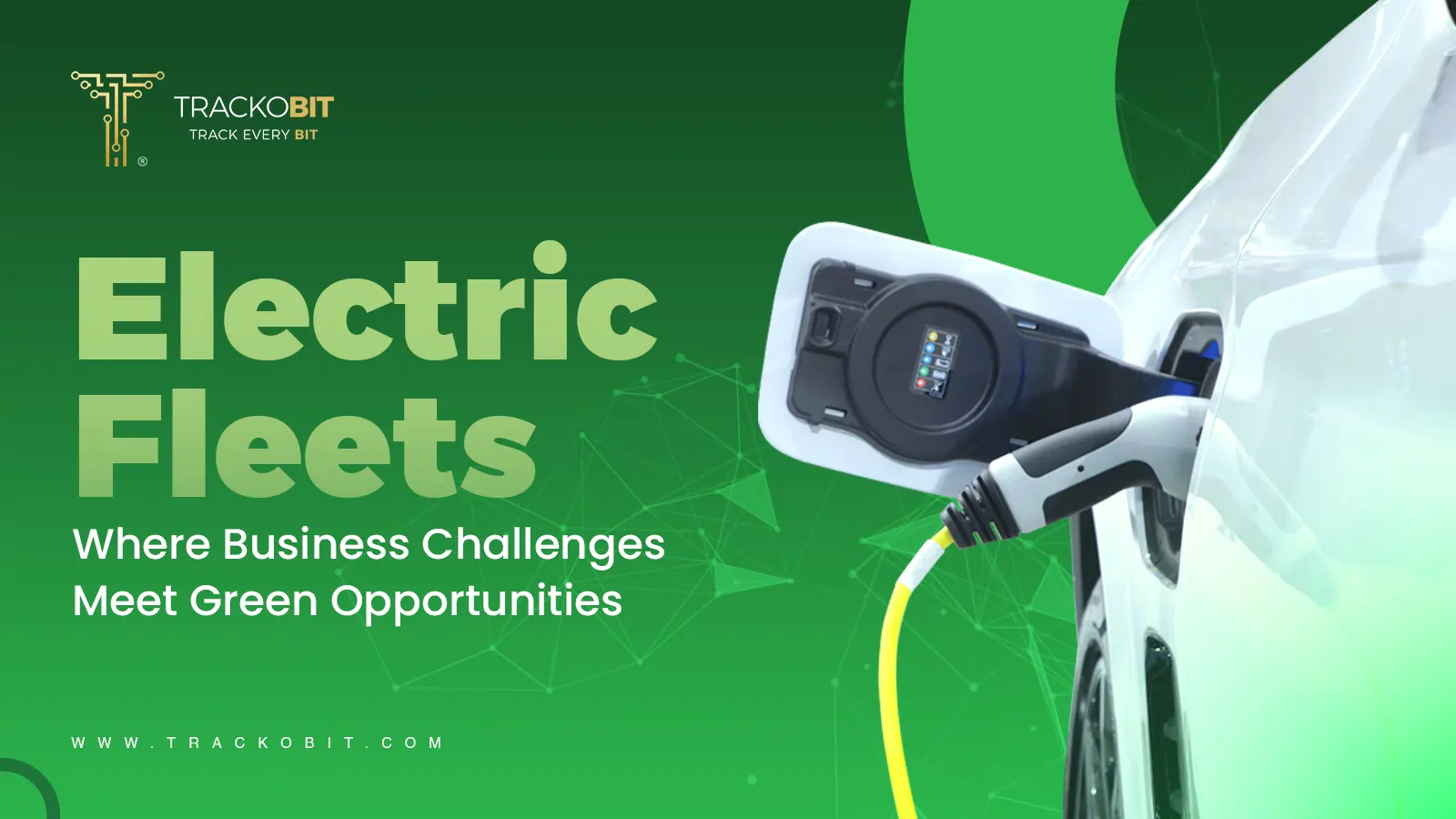-
TrackoBit
Manage commercial vehicles with the new-age Fleet Management Software
TrackoBit -
TrackoField
Streamline your scattered workforce with Field Force Management Software
TrackoField -
Features Resources
-
Blog
Carefully curated articles to update you on industrial trends. -
White Paper
Insightful papers and analysis on essential subject matters. -
Glossary
Explore an alphabetical list of relevant industry terms. -
What’s New
Get TrackoBit & TrackoField monthly updates here. -
Case Study
Explore the cases we solved with our diverse solutions. -
Comparisons
Compare platforms, features, and pricing to find your best fit.
-
About Us
Get to know TrackoBit: our team, ethos, values, and vision. -
Careers
Join the most dynamic cult of coders, creatives and changemakers. -
Tech Support
Learn about our technical support team and services in detail. -
Events
Check out the exhibitions where we left our marks and conquered. -
Contact Us
Connect with us and let us know how we can be of service.
Why is My Engine Idling High? Answering the Most Asked Question
- Author:Anvesha Pandey
- Read Time:8 min
- Published:
- Last Update: December 13, 2024
Table of Contents
Toggle
High engine idling can be a concerning issue which can add to heavy fuel bills. Read on the potential reasons and solutions to deal with them.
Table of Contents
Toggle
Well, are the RPMs (revolutions per minute) of your vehicle climbing skyward, the numbers on your dashboard seem like a frantic heartbeat, and your wallet weeping like a 4-year-old — this can be due to your vehicle’s high engine idling
Don’t worry this piece of writing will let you know all the reasons for the problem and provide you with the solutions. So without any further ado let’s get started.
What is Engine Idling?
Engine idling refers to the functioning of a vehicle’s engine when the vehicle is at a stillstand and not in motion. During idling, the engine continues to operate at a low speed to maintain essential functions such as power steering, power brakes, and electrical systems. Idling is common in situations such as waiting at traffic lights, sitting in the vehicle, or parking with the engine running.
While idling is a part of driving, however, prolonged and unnecessary idling can have negative consequences. Idling consumes fuel and produces carbon emissions, contributing to air pollution. Additionally, it adds wear and tear to the engine over time, reduces the overall efficiency of the fleet, impacts the productivity of the driver, and more
Well, this is a matter of concern, so before things escalate, addressing this issue is very important
Read More – How to Reduce Idle Time for Your Fleet?
Why is it Important to Address High Idling and What You Should Do About It?
Fleet-centric businesses must address high idling as it impacts the fleet economy, environment, and even the survival of the business. This manual explains the consequences of prolonged idling and practical measures to mitigate them.
1) Fuel Efficiency
High engine idling consumes fuel without contributing to the actual movement of the vehicle. This can significantly reduce fuel efficiency and increase fuel costs over time. Addressing high idling helps improve fuel efficiency, reducing operational costs for the business.
2) Vehicle Maintenance
Continuous idling can accelerate wear and tear on engine components which further leads to increased maintenance costs and shorter vehicle lifespan. Addressing high idling helps preserve the longevity of the vehicle.
3) Operational Efficiency
Minimizing idling improves overall operational efficiency. Addressing the issue of idle time can significantly improve the productivity of drivers and the entire fleet, as time spent idling is unproductive.
4) Cost Savings
Long-term cost savings can be achieved through reduced fuel consumption, decreased maintenance expenses, and enhanced operational efficiency. Implementing anti-idling technologies and providing driver training are effective investments that can contribute to these savings.
5) Environmental impact
Minimizing idling is crucial in reducing air pollution and greenhouse gas emissions. By doing so, businesses can showcase their commitment to environmental responsibility and actively contribute towards achieving sustainability objectives.
📌According to the World Health Organization (WHO), almost 4.2 million deaths occur due to air pollution.
📌A study by Argonne for the Department of Energy estimates that heavy-duty trucks emit 11 million tons of carbon dioxide, 55,000 tons of nitrogen oxides, and 400 tons of particulate matter during rest periods.
These reports clearly state that high engine idling is a concerning issue and should be looked into.
Why is My Engine Idling High? Top Reasons

If you’re experiencing a high idle in a vehicle, there could be several reasons behind it. For sure the specific reasons can vary depending on the make and model of the vehicle, as well as the type of engine. Some of the most common reasons for high idling are –
1) Vacuum Leaks
One of the most common causes of high-engine idling is a vacuum leak. The engine control system relies on a proper balance of air and fuel. If there is an unintended air leak in the intake manifold or vacuum hoses, it can disrupt this balance, causing the engine to idle higher than normal.
2) Misadjusted Acceleration Cable
A misadjusted acceleration cable can contribute to high-engine idling. The acceleration cable controls the opening and closing of the throttle cable. If it’s misadjusted it may not allow the throttle plate to close completely when the accelerator pedal is released. As a repercussion, it leads to a higher idling speed than usual..
3) Faulty Idle Air Control Valve (IACV)
The Idle Air Control Valve (IACV) controls idle speed by regulating the air that bypasses the throttle plate. If the IACV malfunctions or accumulates dirt, it can disrupt proper airflow regulation, resulting in high-speed engine idling.
4) Coolant Temperature Sensor Issues
Coolant Temperature Sensor (CTS) issues can also affect the performance of the engine by increasing the idling speed. The CTS measures the temperature of the engine coolant and sends this information to the Engine Control Module (ECM). If the sensor is faulty or sends an incorrect signal, the ECM may receive incorrect temperature data. This also can lead to improper fuel-air mixture adjustments, causing the engine to operate at higher than necessary RPM ( revolutions per minute).
5)Excessive Carbon Buildup
Excessive carbon buildup can impact engine performance, including idle speed. Carbon deposits accumulate on intake valves, throttle bodies, or fuel injectors, hindering proper airflow and disrupting the air-fuel mixture. This can lead to irregular idle speeds, including a high idle.
| 🔍Apart from all these mechanical aspects,some common reasons for higher engine idling include Traffic congestion, unscheduled brakes, loading and unloading, weather conditions, and driver negligence.
Get to know the most efficient routes, know the activities of your drivers, and more, with TrackoBit’s driver behavior monitoring solutions, fuel monitoring tracking, and detailed insight, you can easily reduce idling. Still waiting? Why? Get a free demo with TrackoBit now! |
What Can You Do to Solve High Engine Idling? The Solutions

Now that we have identified all the causes of high engine idling speed, several measures can be taken to eliminate these problems. While there may be multiple factors contributing to these issues, the following list provides solutions to the most frequently encountered ones.
1) Check for Vacuum Leaks
Inspect all the vacuum hoses. Look for all the visible cracks, holes, or disconnected hoses. Once noticed, replace the damaged hoses. Ensure that all the connections are secure to avoid major escalations.
In addition, use a vacuum gauge for the intake manifold. Once connected, start the engine and observe the gauge. A fluctuating or consistently low vacuum reading may indicate a leak.
2) Inspect the Air Intake System
To check the air filter, first locate the air filter housing. Once located remove the air filter and inspect for dirt and clogs. Replace the air filters if necessary.
Further, consider having a look at the Mass Airflow Sensor (MAF), if you find any dirt or damage on the sensor, choose to clean the MAF sensor using a specialized cleaner or replace it if entirely damaged.
3) Examine the Fuel System
Consider having a check on the fuel injectors, ensuring optimum fuel pressure, and inspecting the fuel filters. Also for a fuel system check, thoroughly examine the fuel injector for damage, and consider a clean attachment.
Attach the fuel pressure gauge to the rail, making sure that the pressure matches the manufacturer’s specifications. Locate and check the fuel filter for clogging and replace it if it is dirty. Regular maintenance of injectors and filters ensures proper fuel delivery, resulting in better engine performance. If issues persist, professional monitoring is recommended for accurate diagnosis.
4) Focus on IACV
To address high engine idling, focus on the Idle Air Control Valve (IACV). While inspecting the IACV on the throttle body if you find any sought of dust or dirt. Using a throttle body cleaner, meticulously clean it to eliminate dirt and carbon deposits.
Reinstall the cleaned IACV. If idle problems persist despite cleaning, it may indicate a malfunction. It is advised to consider the replacement of IACV. Consult your vehicle’s service manual for specific guidance on IACV maintenance and replacement procedures.
5) Idle Speed Adjustment
Idle speed adjustment is crucial for engine performance. Locate the throttle stop screw on the throttle body or carburetor. Consult the service manual for the recommended idle speed and use a tachometer to measure the current speed.
Adjust the throttle stop screw incrementally to achieve the specified idle speed. For electronic throttle control, consider using a scan tool. If unsure, seek professional assistance for precise adjustments, ensuring optimal engine function and responsiveness.
| 🔎 Now that you know the solutions to all mechanical faults, let us get to know some common solutions to the most common problems including driver education to enhance driver behavior, using anti-idling solutions, and GPS fleet management software to get detailed insight about the vehicle and driver. |
Is Idling bad for your Engine?
Now that you know the various repercussions of high engine idling, you must have understood that true idling can be really very harmful, especially if you are in a fleet-centric business. For a large fleet operating on a fixed budget, the excessive waste of fuel poses a significant problem. However, the negative consequences of idling extend beyond financial losses.
The short-term effects of high engine idling are excess fuel consumption and engine wear while the long-term effects of idling are carbon buildup as when the engine is idling, it does not reach its ideal temperature, causing incomplete combustion of fuel and further resulting in the buildup of fuel residue on the cylinder walls.
This can lead to additional harm to engine parts such as spark plugs and exhaust systems. This ultimately results in high maintenance expenses and reduces the engine’s lifespan.
However, it’s important to note that modern engines are designed to handle short periods of idling without significant harm. For example, idling in traffic or waiting for a short period is generally not a major concern. On the other hand, prolonged idling, especially in extreme conditions (e.g., very hot or cold weather), can have more noticeable negative effects.
| 📌Additional Tips
* Pay attention to the changes in idle speed, particularly after starting the engine, as this provides clues to the problem. *Note down any other symptoms you’re experiencing, like rough idling, engine stalling, or decreased performance, as they can help diagnose the issue. |
Wrapping it All
High engine idling is a concerning issue both in economic and environmental terms. Lighter the burden on your pocket as well as contribute to the environment effectively by cutting down on idling with solutions like time monitoring, fuel management systems and having detailed insights.
As the list of the most common problems and their solutions comes to an end, with TrackoBit you can get better visibility and productivity with features like real-time monitoring, detailed insights, and more, which will surely give you an edge over all the competitors.
Are you still waiting?
Just open a new tab and get in touch with TrackoBit!
FAQs
-
Why does my vehicle’s engine run at a higher-than-normal RPM?
A variety of factors can result from high idle rpm, including sensor malfunction, vacuum leak, or throttle body problems.
-
Is it normal for the engine to work hard in the cold?
Yes, some vehicles have a cold start feature that increases idle rpm as the engine cools down to help with the heating. However, long-term elevations can be an issue.
-
How do vacuum leaks contribute to great idle?
A vacuum leak allows unmetered air to enter the engine, causing an imbalance in the air-fuel mixture, causing the engine to operate at higher RPMs
-
What makes my engine work so hard when I start the car?
A cold start enrichment system, a faulty idle air control valve, or a problem with the engine temperature sensor can cause high idle during startup.
-
Can a dirty air filter cause high-speed idle?
Yes, dirty air can damage the air-fuel mixture, causing inefficient combustion and potentially running the engine at a higher speed.
Anvesha is a communication specialist at TrackoBit. With a strong background in media and communications, she adds much-needed balance and brevity to TrackoBit’s... Read More
Related Blogs
-

Plug, Pair, Perform TrackoBit Introduces BLE Sensor Integration
Tithi Agarwal November 26, 2025TrackoBit’s BLE Sensor Integration enables wireless, real-time monitoring with faster installs and accurate insights. It improves fleet efficiency, visibility, and…
-

How to Use Driver Behavior Reports as a Sales Hook to Close Big Fleets
Tithi Agarwal October 16, 2025TrackoBit’s driver behavior reports empower fleet providers to win big contracts by showcasing safety, efficiency, and measurable ROI.
-

TrackoBit’s Unlocking in Geofence with OTP: Elevating Cargo Protection
Tithi Agarwal September 16, 2025TrackoBit’s latest feature – Unlocking in Geofence with OTP lets you lock out theft and unlock cargo only at the…
-

The Rise of Electric Fleets: Challenges and Opportunities for Businesses
Tithi Agarwal September 4, 2025The global fleet landscape is poised for a decade-long transformation. This change is being powered by electricity. Logistics-led businesses are…

Subscribe for weekly tips to optimize your fleet’s potential!
Your inbox awaits a welcome email. Stay tuned for the latest blog updates & expert insights.
"While you're here, dive into some more reads or grab quick bites from our social platforms!"Stay Updated on tech, telematics and mobility. Don't miss out on the latest in the industry.
We use cookies to enhance and personalize your browsing experience. By continuing to use our website, you agree to our Privacy Policy.


































